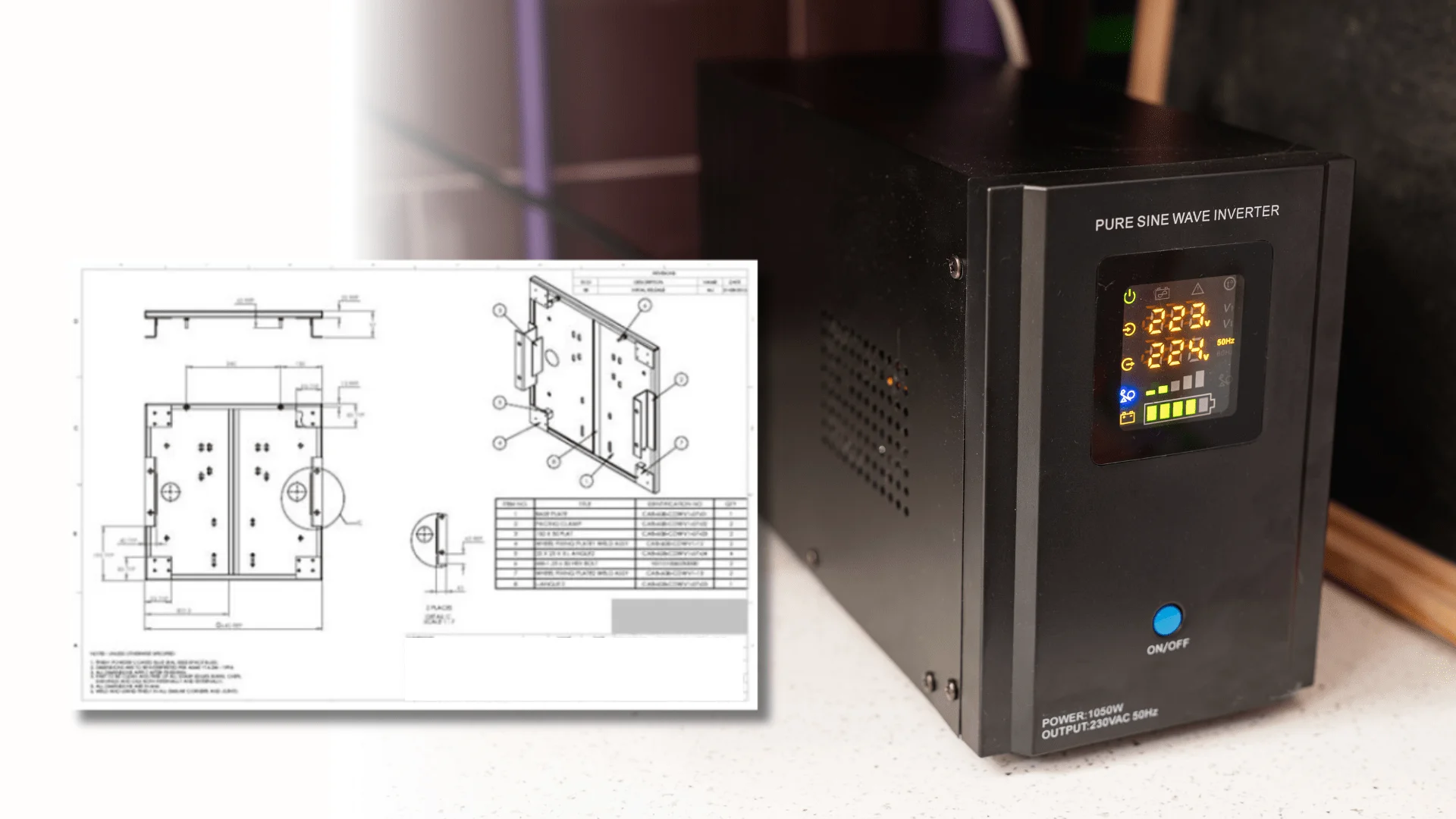The US-based UPS & Stabilizer manufacturer faced a challenge with outdated manufacturing practices due to improperly maintained mechanical design data. This led to a reliance on manufacturing vendors to provide design updates. Srushty Global was tasked to enhance these processes by converting 2D images into accurate and detailed 3D CAD formats.
Objectives
The objectives include updating 3D CAD models for all product variants to ensure accuracy and reflect design changes, creating comprehensive engineering and manufacturing drawings with detailed instructions, revising the Bill of Materials (BoM) to accurately list components, and documenting the assembly process to guide the assembly team effectively. These steps are crucial for maintaining product integrity, managing inventory efficiently, and ensuring consistent and accurate assembly of the product variants.

Our Process
Marketing Research & Requirements Analysis
The objective here is to thoroughly understand the customer’s CAD service requirement. The process involves a detailed analysis of provided images, addressing any ambiguities through Request for Information (RFI) exchanges. Weekly client meetings facilitate ongoing collaboration and progress updates. The final phase entails meticulous conversion, aligning the 3D CAD output with clarified requirements for optimal results.
Analyzing Existing problems
Our team carefully checks the initial 2D images for any issues or missing information. We review each batch thoroughly, pinpointing areas that need clarification. We then send clarification requests to the client and incorporate their feedback. Once we have a clear understanding, we proceed to complete the 3D conversions with improved accuracy
CAD modelling
In this phase, designers use specialized software to extrude and manipulate 2D images into three-dimensional digital representations. This process involves adding depth, textures, and dimensions to recreate a lifelike 3D model. Precise measurements and details from the 2D images guide the creation of an accurate and realistic 3D CAD model. The final output is a dynamic digital representation suitable for various applications, from product design to architectural planning
Updating the feasibility of manufacturing
In the process of updating feasibility for manufacturing in the 2D to 3D CAD service, adjustments are made to ensure practical manufacturability. This involves refining designs, addressing material considerations, and optimizing components for production efficiency. Iterative reviews and client feedback play a crucial role in fine-tuning the 3D models to align with manufacturing capabilities. The goal is to enhance the transition from 2D images to 3D CAD, making the final designs both feasible and optimal for manufacturing processes
Quality Check
In the 2D to 3D CAD conversion process, a QC person meticulously examines the files, focusing on adhering to the instructions and markups present in the original drawings. This quality check ensures accuracy and fidelity in translating the 2D images into the desired 3D format, maintaining precision throughout the transformation service
Preparation of Bill of Materials
In the preparation of Bill of Materials (BOM) for the 2D to 3D CAD conversion service, the process involves meticulously listing all components and materials required for the three-dimensional model. This includes specifying quantities, dimensions, and other essential details. By creating a comprehensive BOM, ensures accurate procurement and assembly of necessary resources for the successful transformation of 2D images into 3D CAD models. This step is crucial for streamlined project management and efficient production
Key Challenges & Solution
Upon receiving partially detailed initial files, we systematically reviewed each batch and submitted Request for Information (RFI) files to the client for clarification. Incorporating their feedback, we refined our approach and completed the remaining conversions. Regular weekly meetings were conducted to discuss and update the client on the progress made in the previous week.
Impact
The outsourcing engagement had a significant impact on the client’s operations. It led to the standardization of their designs, which helped streamline their manufacturing processes and improve overall product consistency. Additionally, by focusing on Design for Manufacturing (DFM) principles, the client was able to reduce costs by 30%, making their products more competitive in the market. This demonstrates the tangible benefits of outsourcing in enhancing efficiency and reducing production costs.







